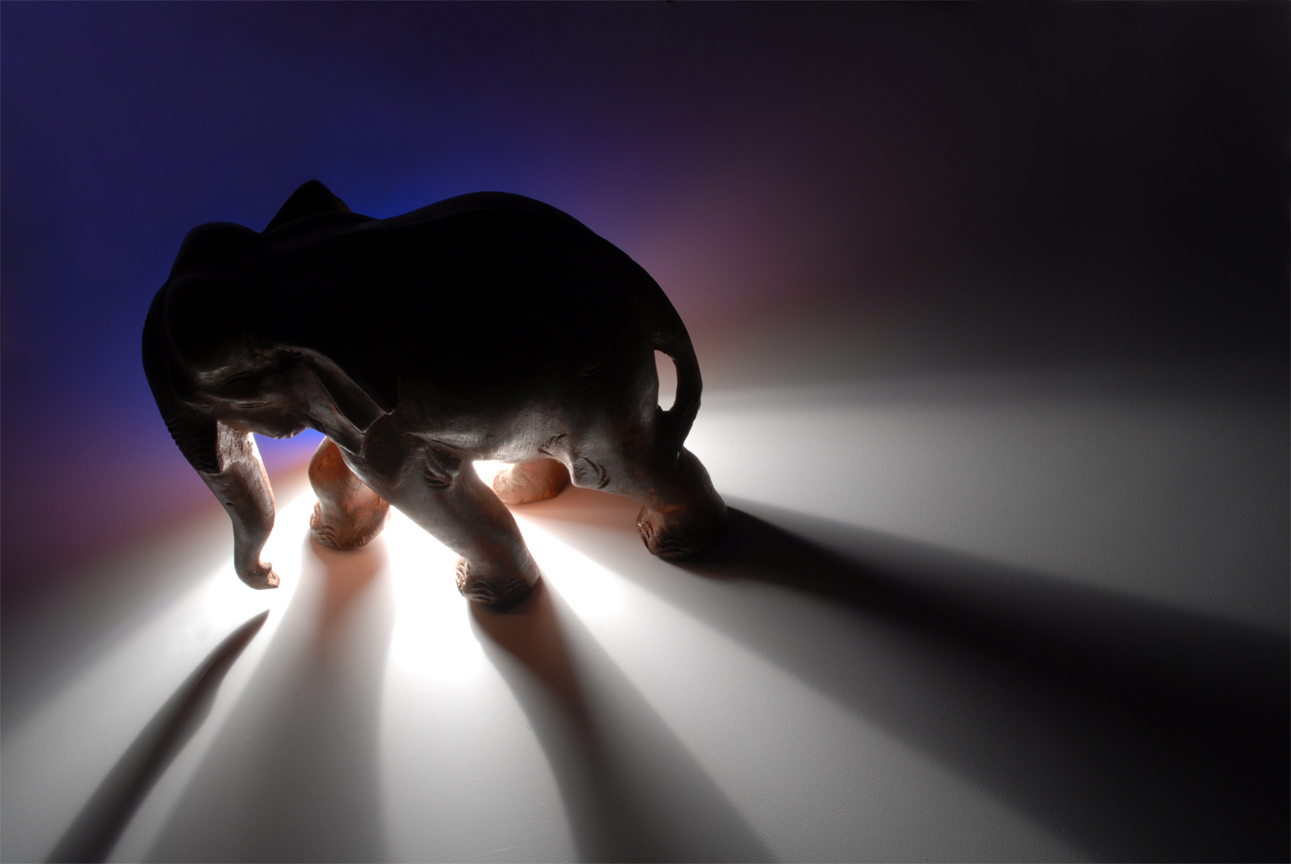
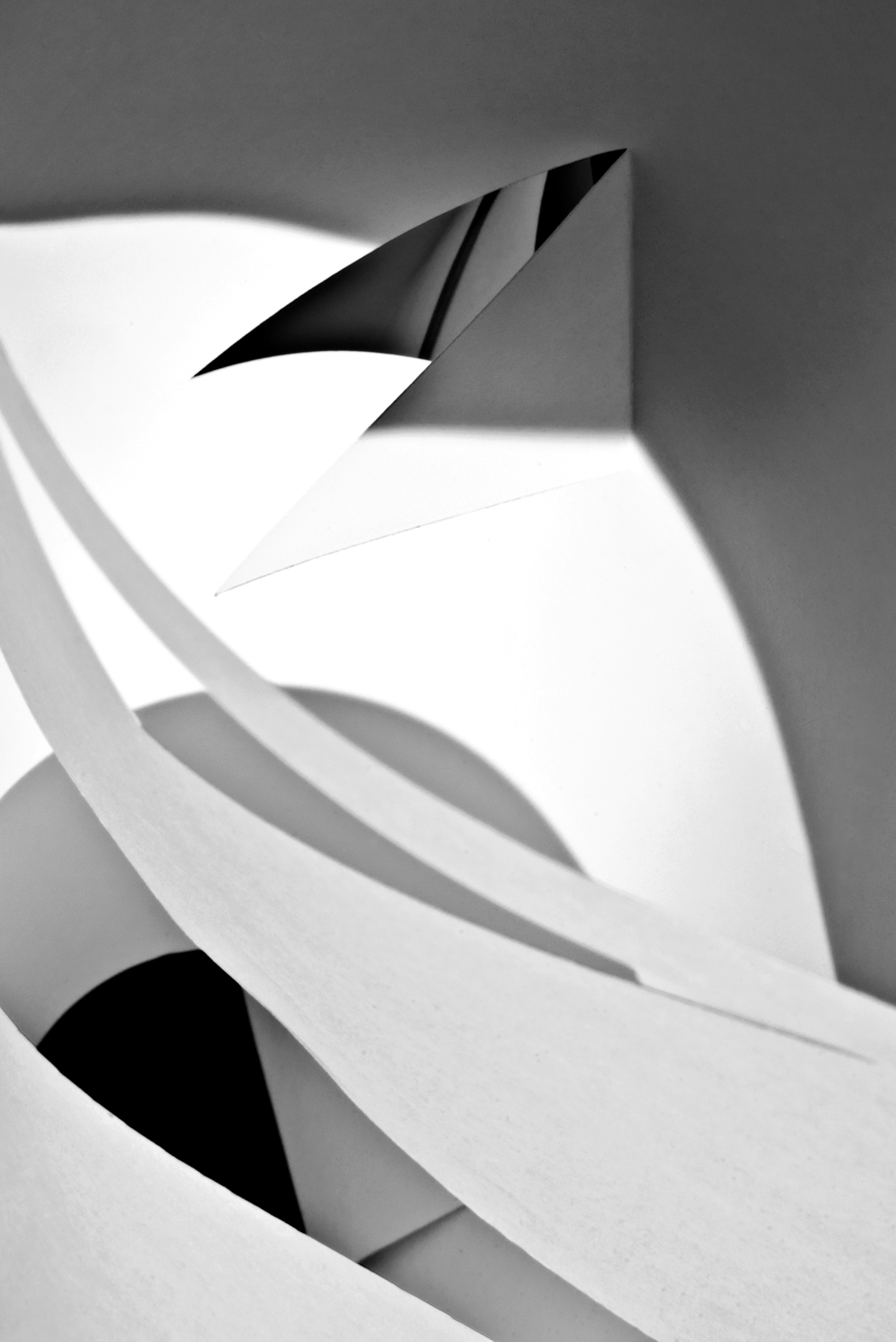
Growing up in downtown Chicago, I have always been cognizant of the surrounding architecture. What I found particularly interesting were the tall, steel frame buildings with their impenetrable faces; the patterns and intersections of lines that compose these structures greatly influenced my aesthetic sensibilities. I began my exploration of architecture with photography as I tried to find angles that would abstract buildings and flatten them into graphic and geometric compositions.
With
this project, instead of flattening space onto a two-dimensional plane,
I chose to create, and photograph, three-dimensional space formed from a
single piece of paper. For each piece, I fold and cut paper in such a
way that directional lighting creates an abstract space. The shapes
produced owe much to the ideas of Russian Constructivism and
Precisionism. The scale and setting of the pieces is intended to remove
the viewers from the architecture of the gallery and draw them into the
space created by the photographs.
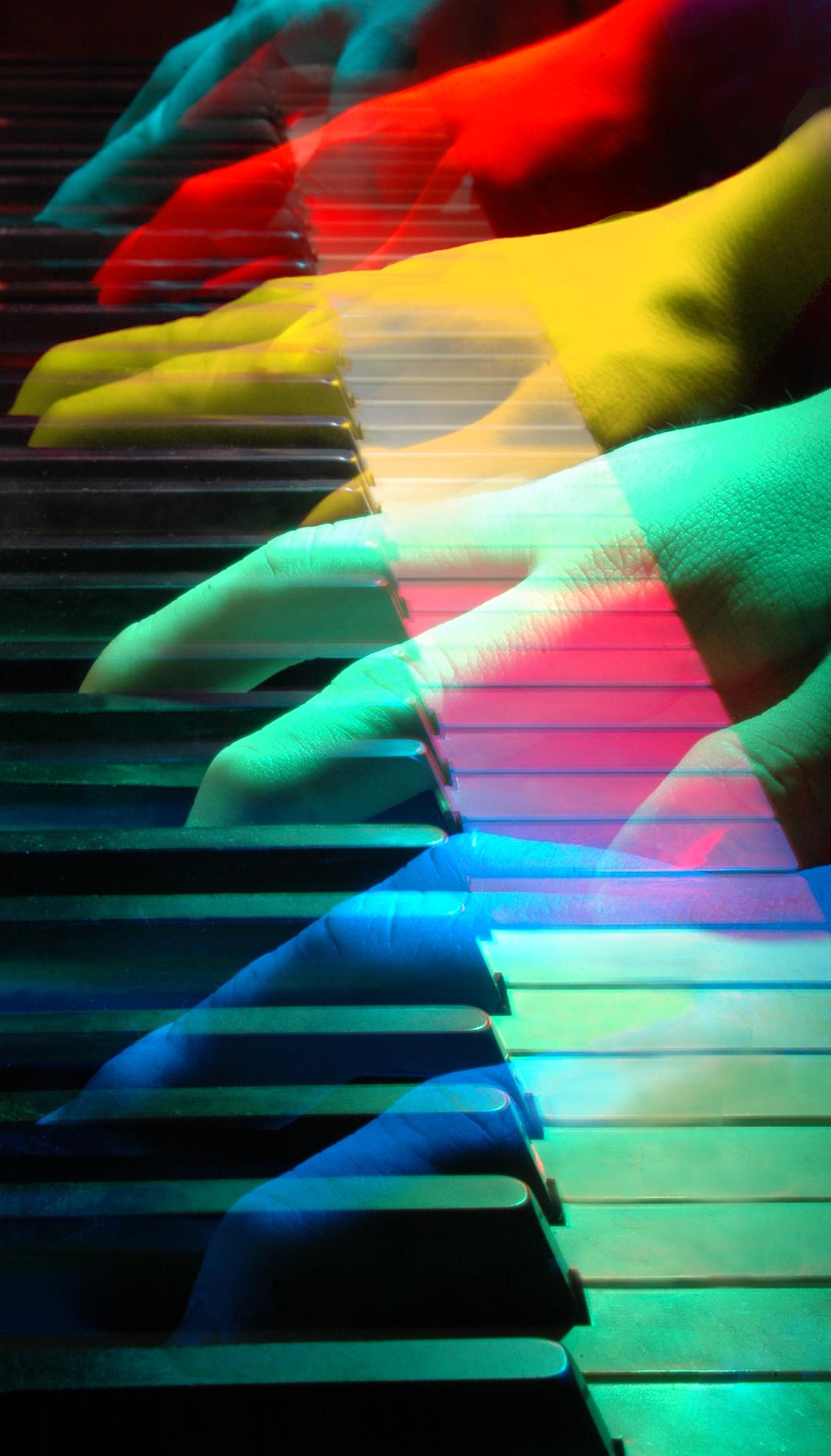
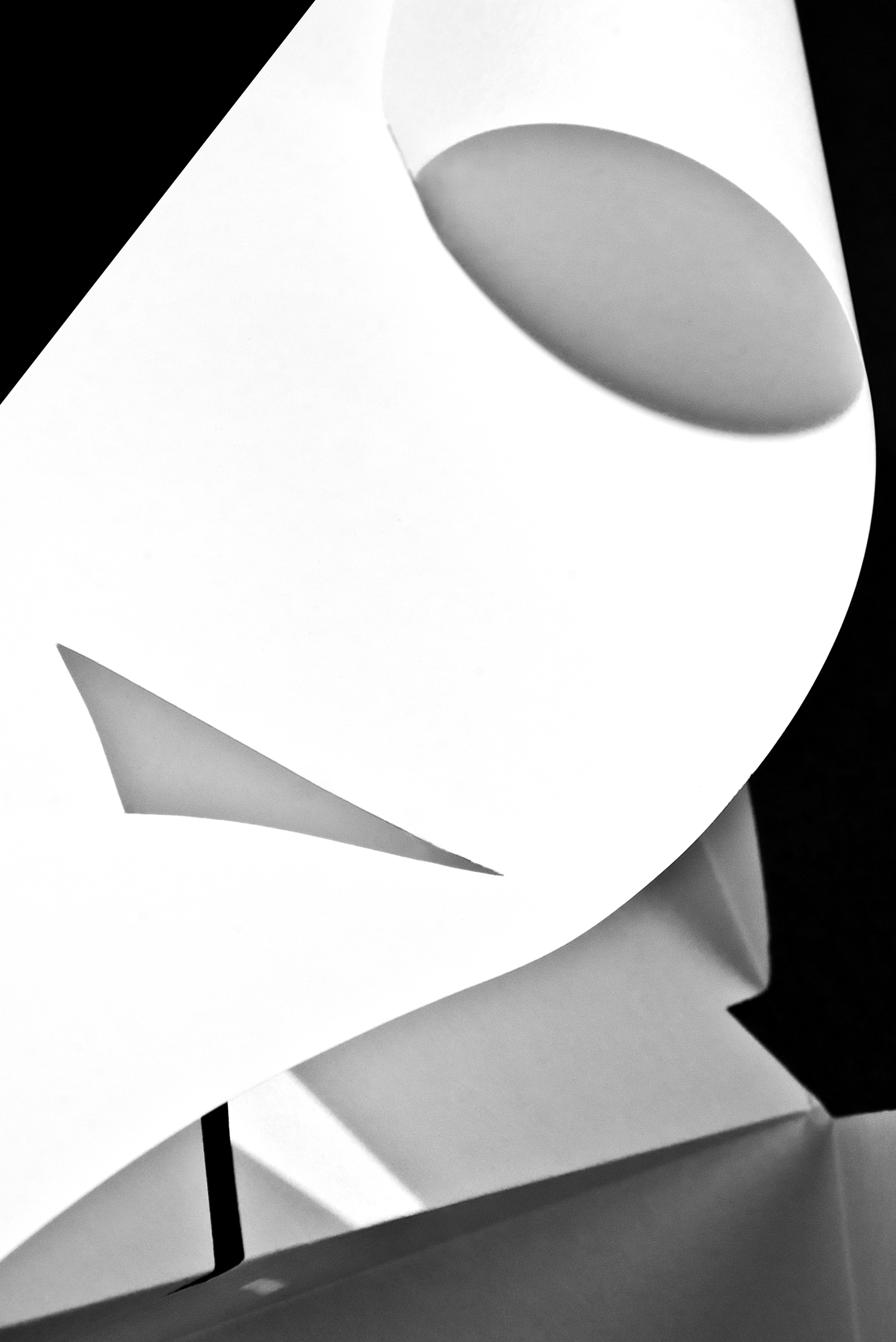
Growing up in downtown Chicago, I have always been cognizant of the surrounding architecture. What I found particularly interesting were the tall, steel frame buildings with their impenetrable faces; the patterns and intersections of lines that compose these structures greatly influenced my aesthetic sensibilities. I began my exploration of architecture with photography as I tried to find angles that would abstract buildings and flatten them into graphic and geometric compositions.
With
this project, instead of flattening space onto a two-dimensional plane,
I chose to create, and photograph, three-dimensional space formed from a
single piece of paper. For each piece, I fold and cut paper in such a
way that directional lighting creates an abstract space. The shapes
produced owe much to the ideas of Russian Constructivism and
Precisionism. The scale and setting of the pieces is intended to remove
the viewers from the architecture of the gallery and draw them into the
space created by the photographs.
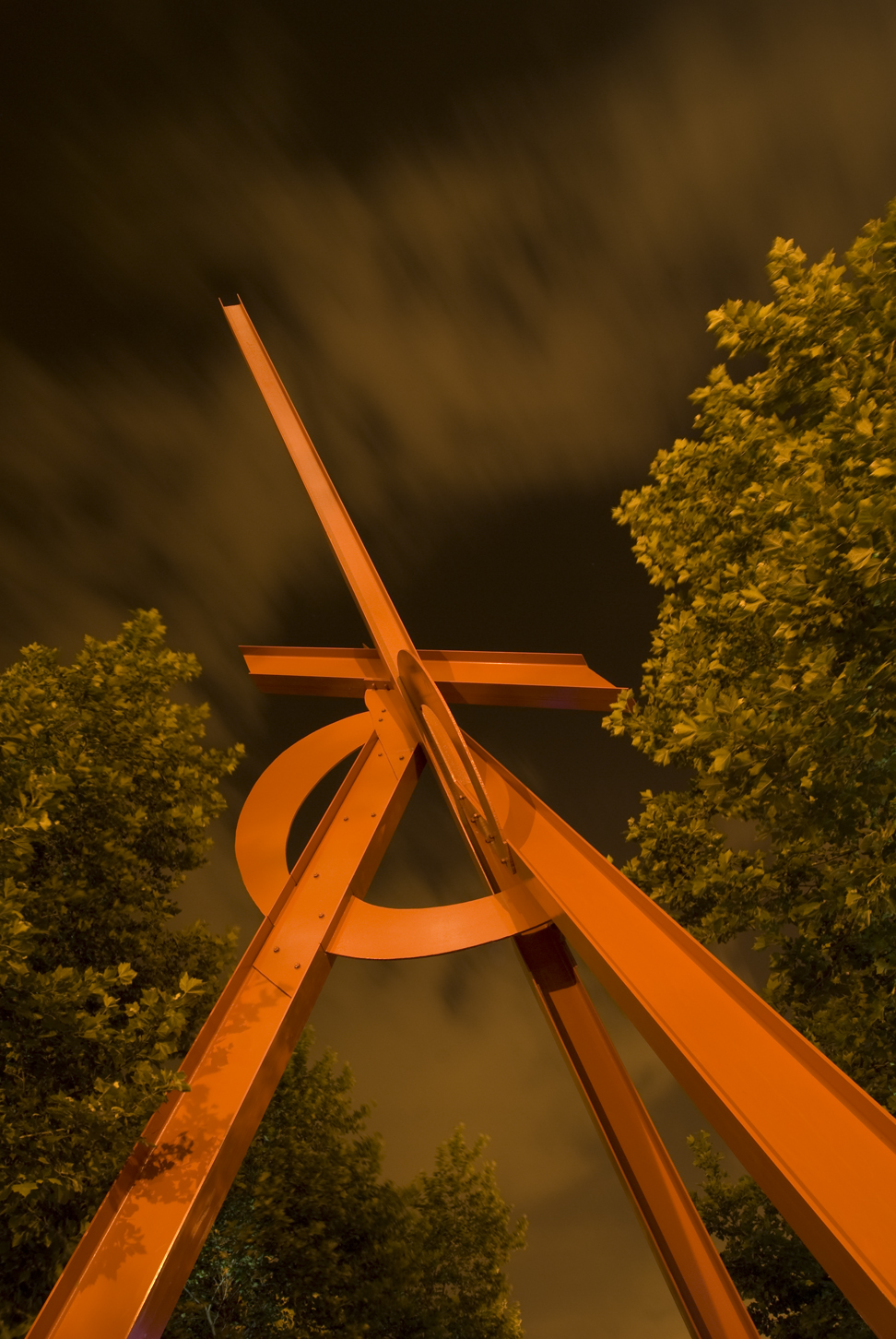
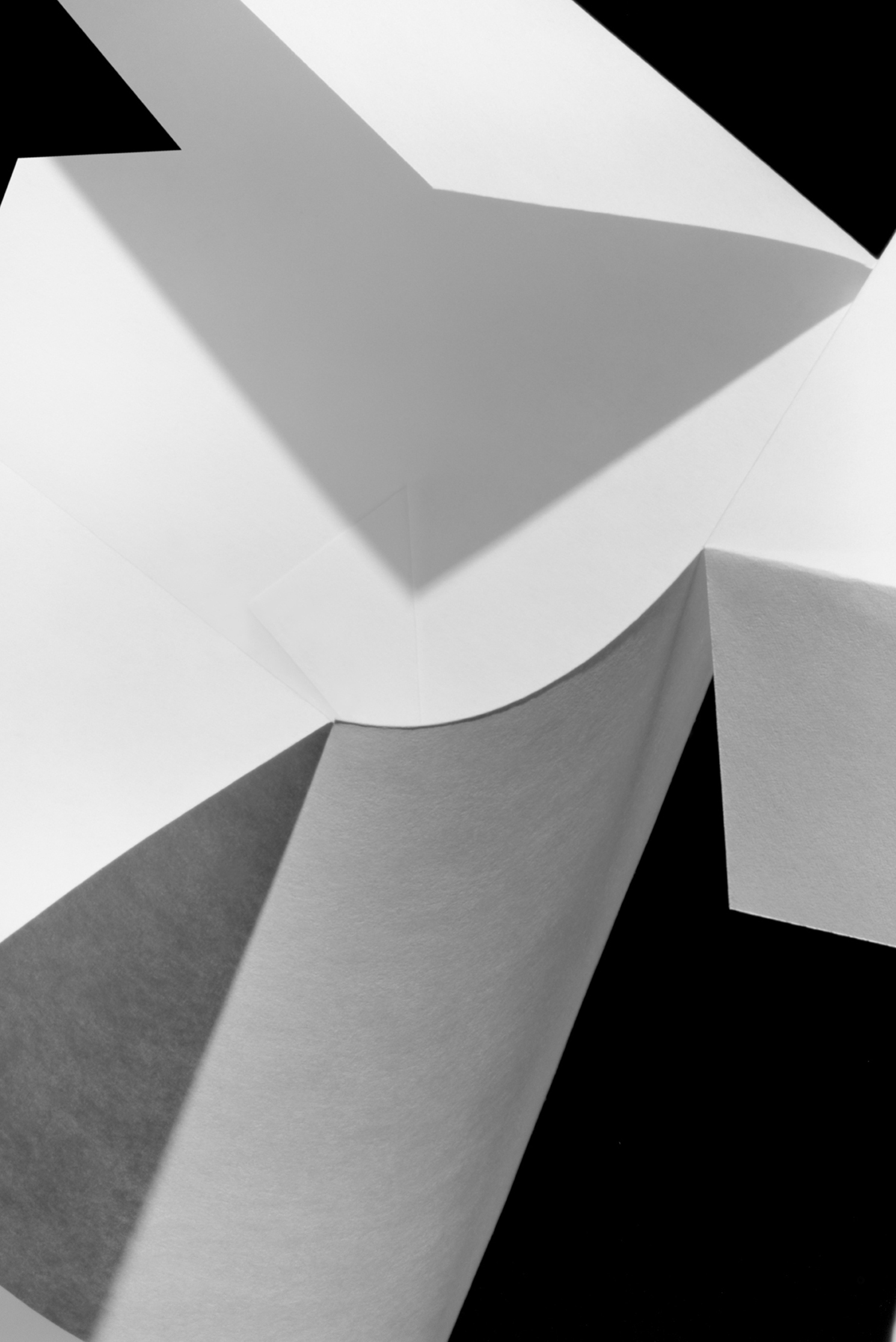
Growing up in downtown Chicago, I have always been cognizant of the surrounding architecture. What I found particularly interesting were the tall, steel frame buildings with their impenetrable faces; the patterns and intersections of lines that compose these structures greatly influenced my aesthetic sensibilities. I began my exploration of architecture with photography as I tried to find angles that would abstract buildings and flatten them into graphic and geometric compositions.
With
this project, instead of flattening space onto a two-dimensional plane,
I chose to create, and photograph, three-dimensional space formed from a
single piece of paper. For each piece, I fold and cut paper in such a
way that directional lighting creates an abstract space. The shapes
produced owe much to the ideas of Russian Constructivism and
Precisionism. The scale and setting of the pieces is intended to remove
the viewers from the architecture of the gallery and draw them into the
space created by the photographs.
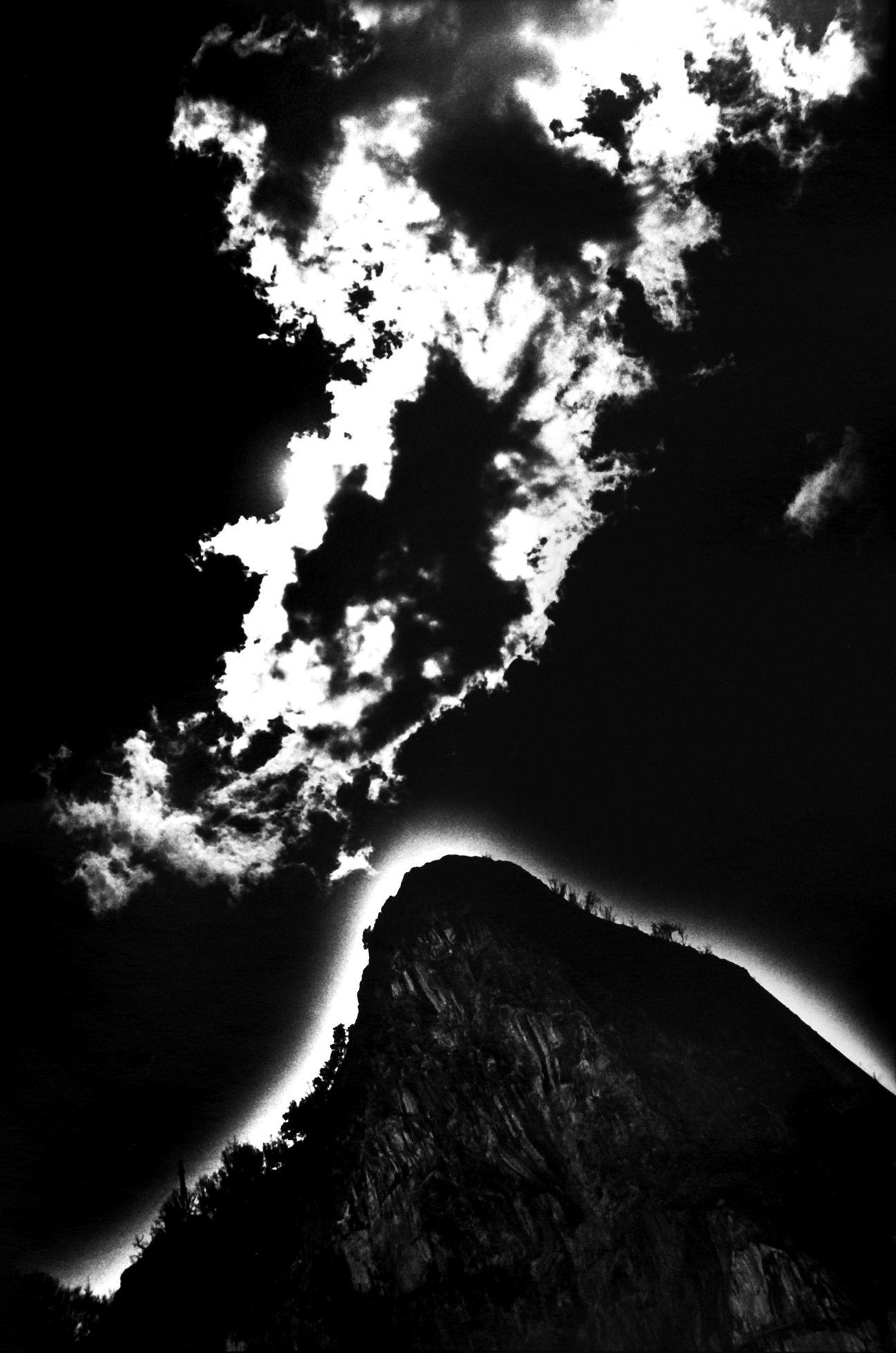
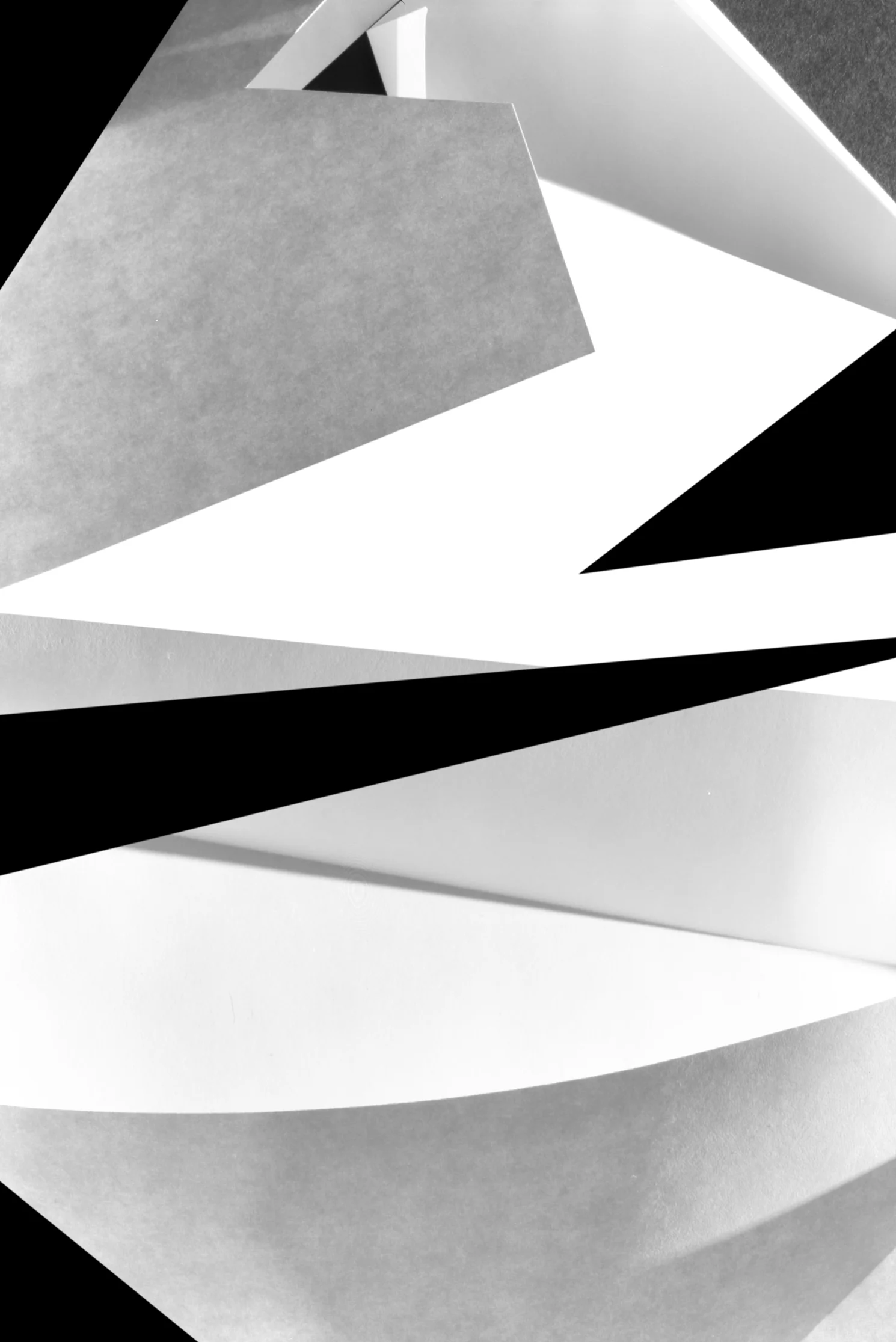
Growing up in downtown Chicago, I have always been cognizant of the surrounding architecture. What I found particularly interesting were the tall, steel frame buildings with their impenetrable faces; the patterns and intersections of lines that compose these structures greatly influenced my aesthetic sensibilities. I began my exploration of architecture with photography as I tried to find angles that would abstract buildings and flatten them into graphic and geometric compositions.
With
this project, instead of flattening space onto a two-dimensional plane,
I chose to create, and photograph, three-dimensional space formed from a
single piece of paper. For each piece, I fold and cut paper in such a
way that directional lighting creates an abstract space. The shapes
produced owe much to the ideas of Russian Constructivism and
Precisionism. The scale and setting of the pieces is intended to remove
the viewers from the architecture of the gallery and draw them into the
space created by the photographs.
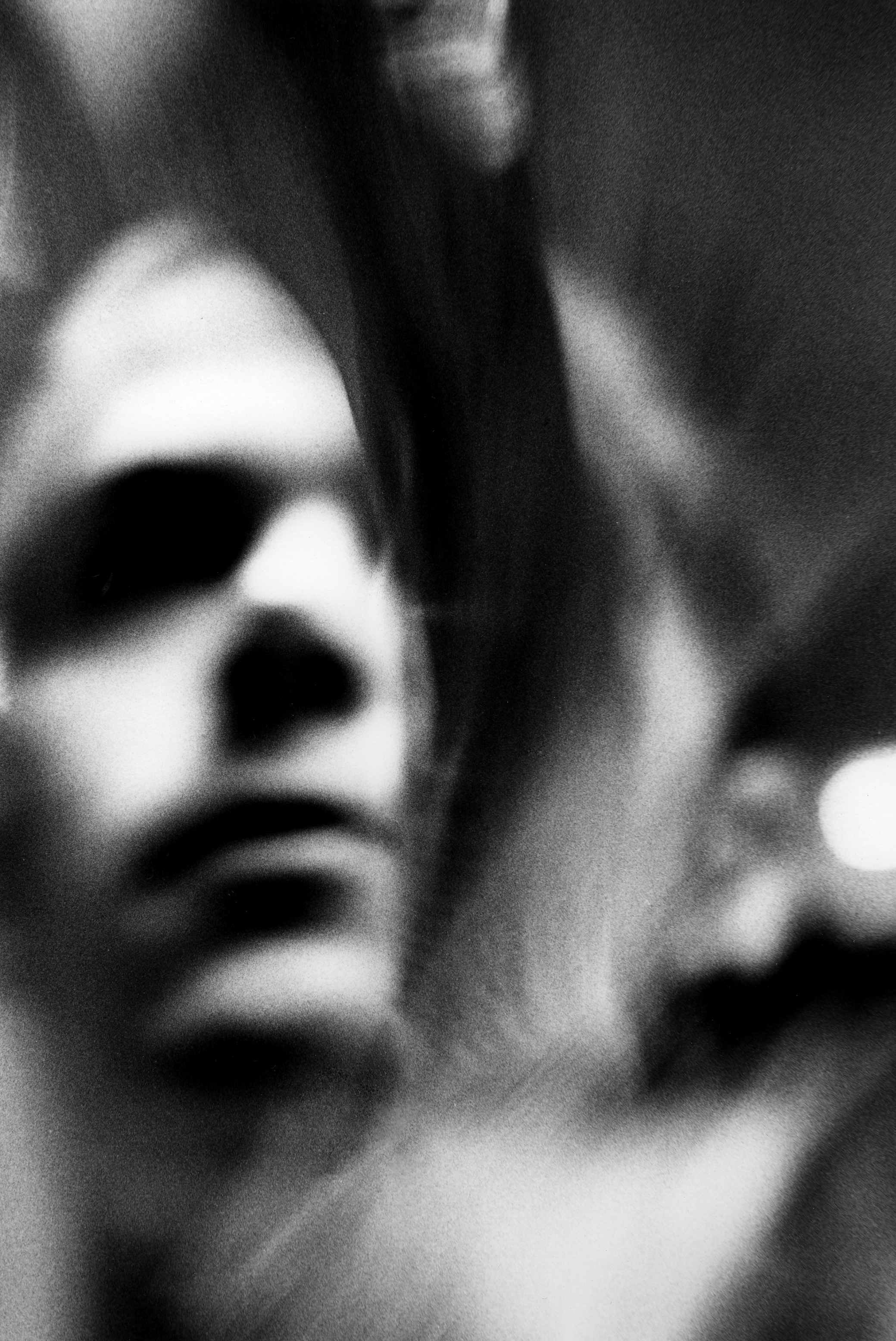
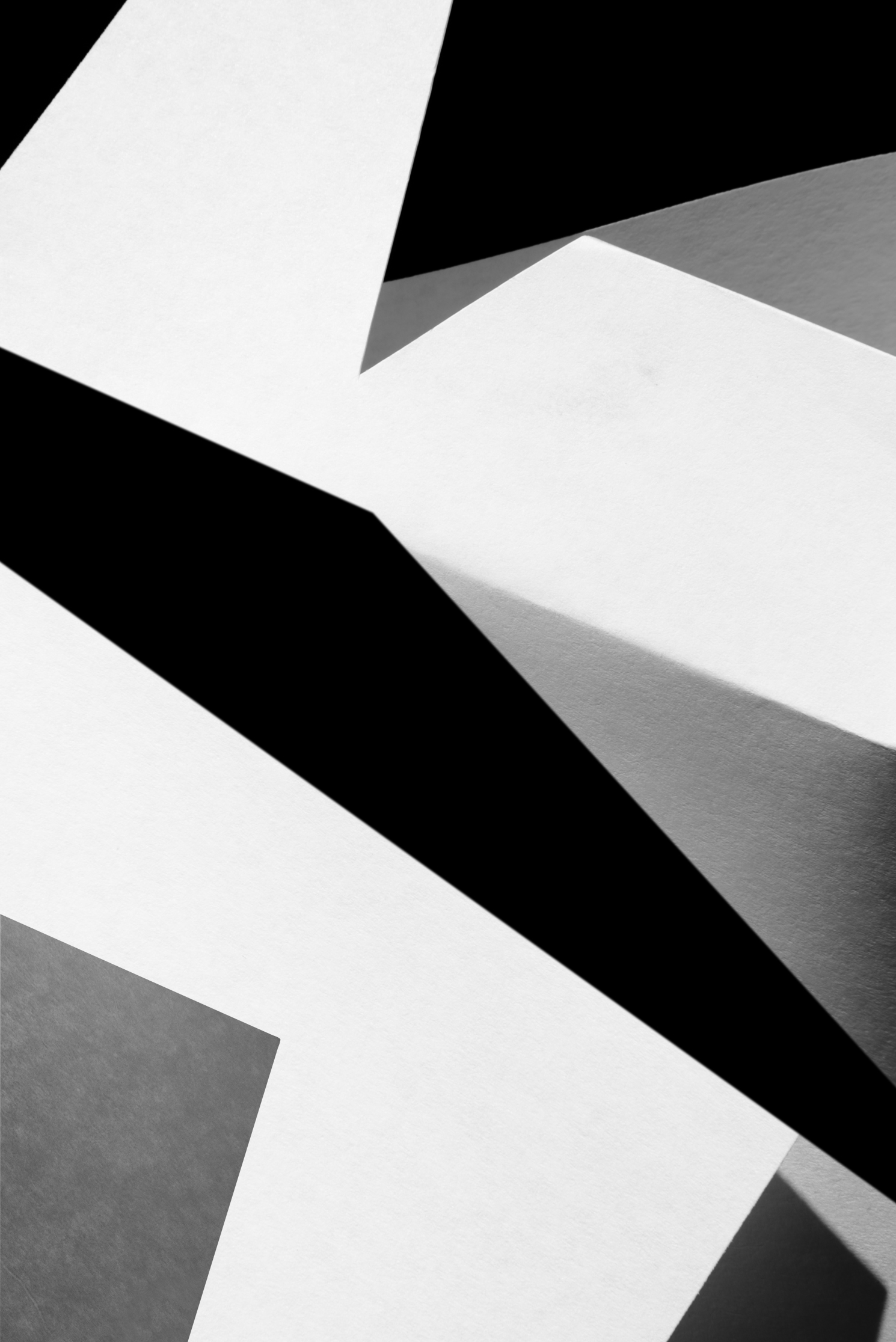
Growing up in downtown Chicago, I have always been cognizant of the surrounding architecture. What I found particularly interesting were the tall, steel frame buildings with their impenetrable faces; the patterns and intersections of lines that compose these structures greatly influenced my aesthetic sensibilities. I began my exploration of architecture with photography as I tried to find angles that would abstract buildings and flatten them into graphic and geometric compositions.
With
this project, instead of flattening space onto a two-dimensional plane,
I chose to create, and photograph, three-dimensional space formed from a
single piece of paper. For each piece, I fold and cut paper in such a
way that directional lighting creates an abstract space. The shapes
produced owe much to the ideas of Russian Constructivism and
Precisionism. The scale and setting of the pieces is intended to remove
the viewers from the architecture of the gallery and draw them into the
space created by the photographs.
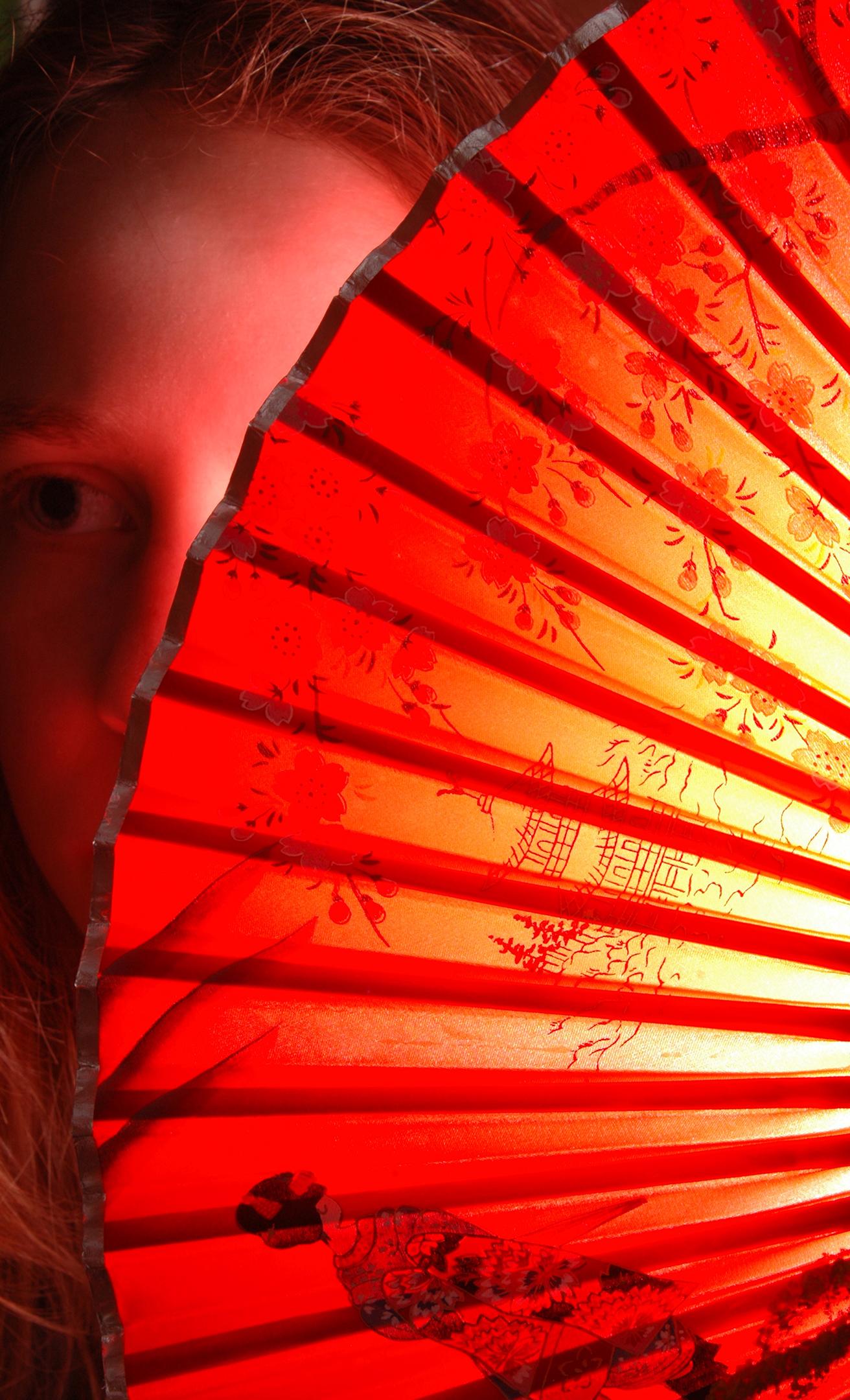

Growing up in downtown Chicago, I have always been cognizant of the surrounding architecture. What I found particularly interesting were the tall, steel frame buildings with their impenetrable faces; the patterns and intersections of lines that compose these structures greatly influenced my aesthetic sensibilities. I began my exploration of architecture with photography as I tried to find angles that would abstract buildings and flatten them into graphic and geometric compositions.
With
this project, instead of flattening space onto a two-dimensional plane,
I chose to create, and photograph, three-dimensional space formed from a
single piece of paper. For each piece, I fold and cut paper in such a
way that directional lighting creates an abstract space. The shapes
produced owe much to the ideas of Russian Constructivism and
Precisionism. The scale and setting of the pieces is intended to remove
the viewers from the architecture of the gallery and draw them into the
space created by the photographs.
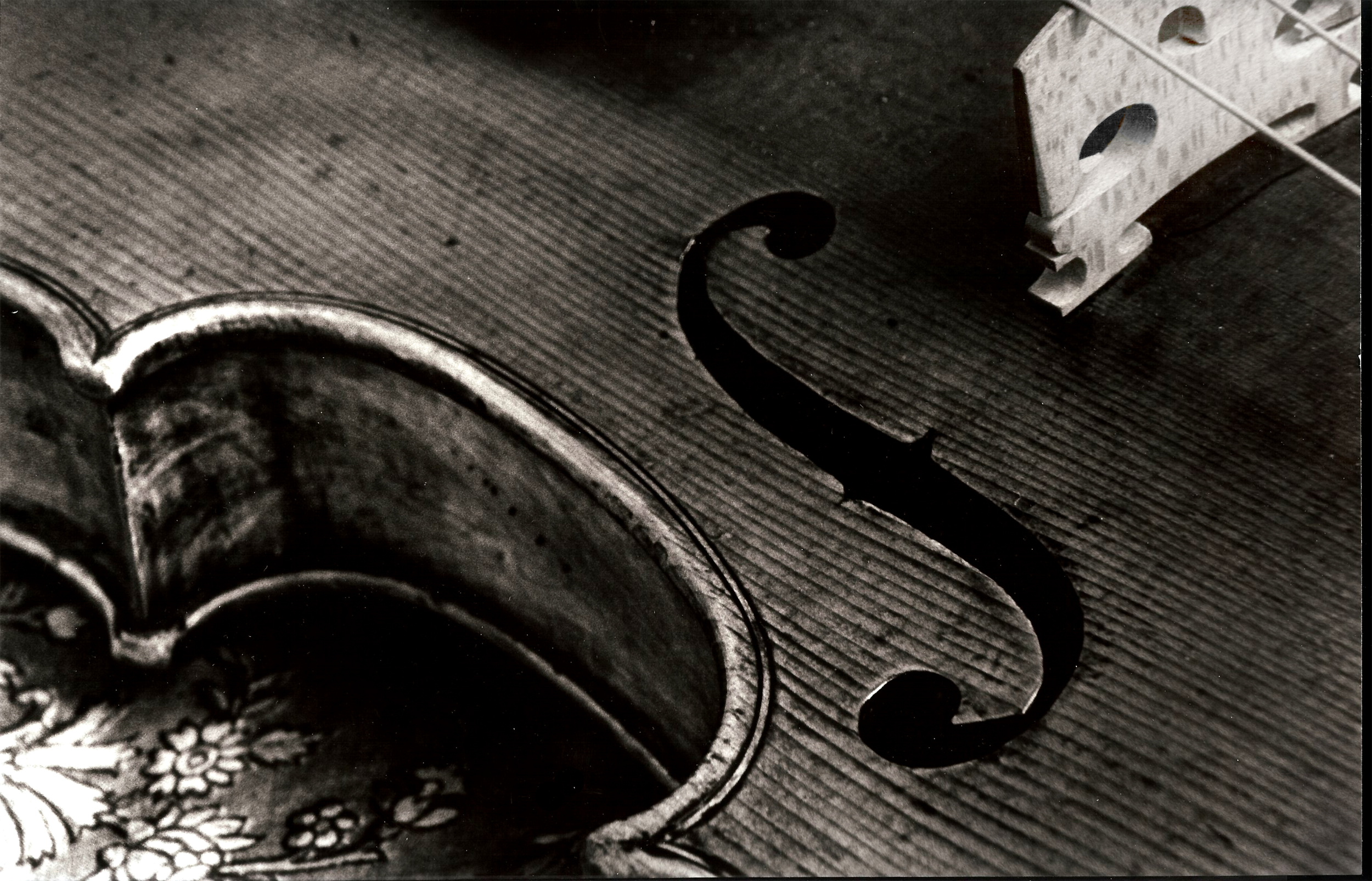
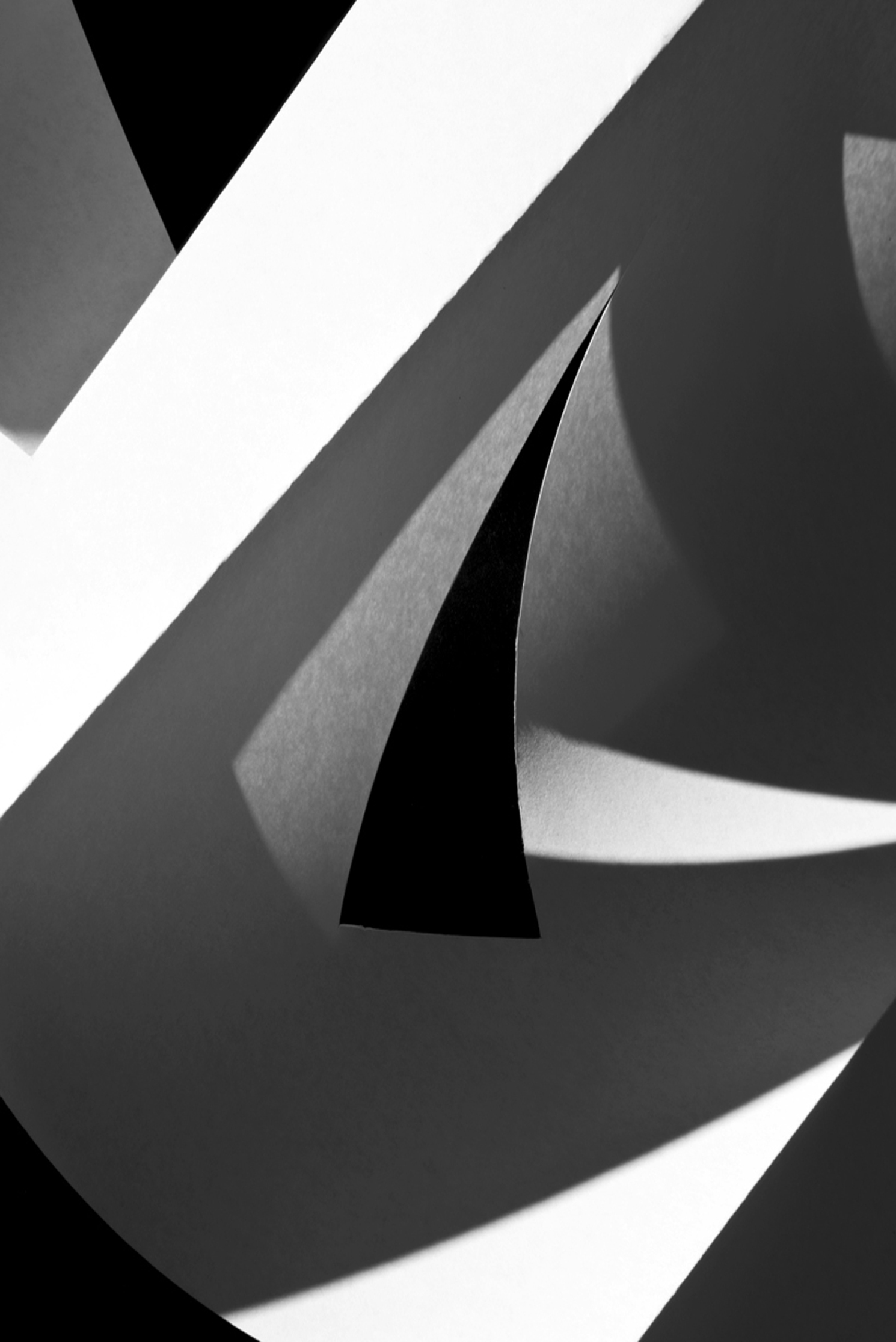
Growing up in downtown Chicago, I have always been cognizant of the surrounding architecture. What I found particularly interesting were the tall, steel frame buildings with their impenetrable faces; the patterns and intersections of lines that compose these structures greatly influenced my aesthetic sensibilities. I began my exploration of architecture with photography as I tried to find angles that would abstract buildings and flatten them into graphic and geometric compositions.
With
this project, instead of flattening space onto a two-dimensional plane,
I chose to create, and photograph, three-dimensional space formed from a
single piece of paper. For each piece, I fold and cut paper in such a
way that directional lighting creates an abstract space. The shapes
produced owe much to the ideas of Russian Constructivism and
Precisionism. The scale and setting of the pieces is intended to remove
the viewers from the architecture of the gallery and draw them into the
space created by the photographs.
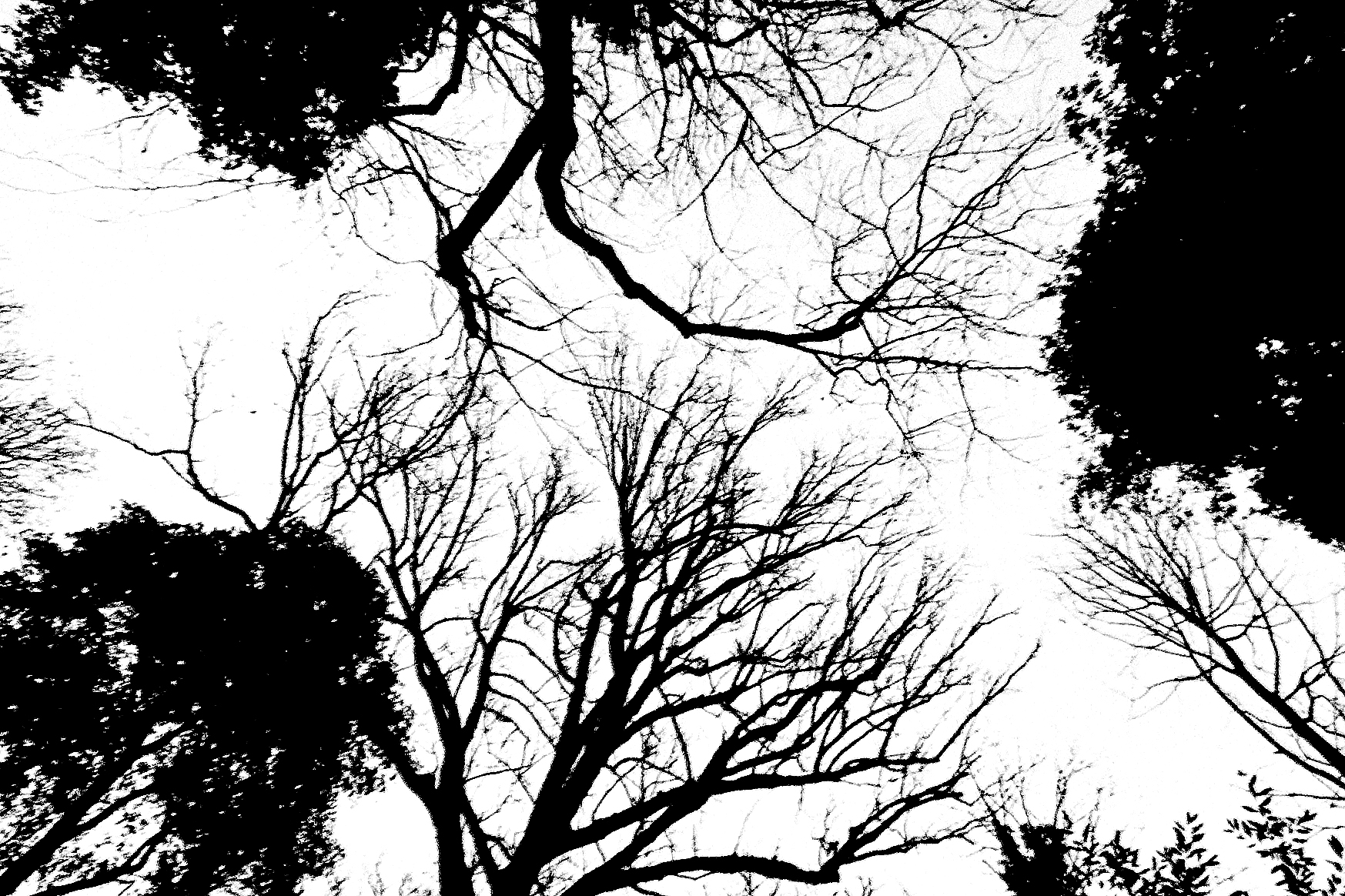

Growing up in downtown Chicago, I have always been cognizant of the surrounding architecture. What I found particularly interesting were the tall, steel frame buildings with their impenetrable faces; the patterns and intersections of lines that compose these structures greatly influenced my aesthetic sensibilities. I began my exploration of architecture with photography as I tried to find angles that would abstract buildings and flatten them into graphic and geometric compositions.
With this project, instead of flattening space onto a two-dimensional plane, I chose to create, and photograph, three-dimensional space formed from a single piece of paper. For each piece, I fold and cut paper in such a way that directional lighting creates an abstract space. The shapes produced owe much to the ideas of Russian Constructivism and Precisionism. The scale and setting of the pieces is intended to remove the viewers from the architecture of the gallery and draw them into the space created by the photographs.
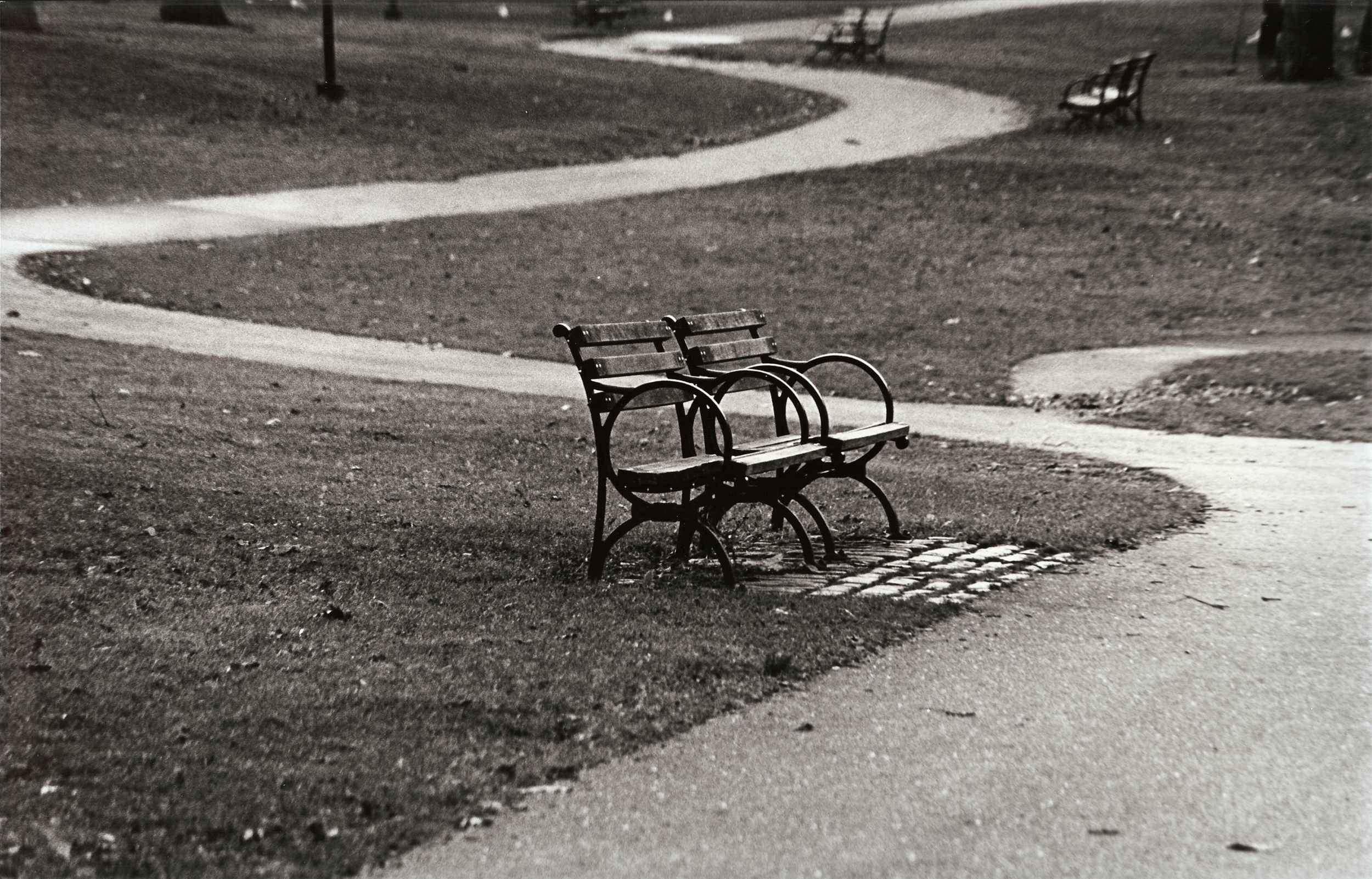
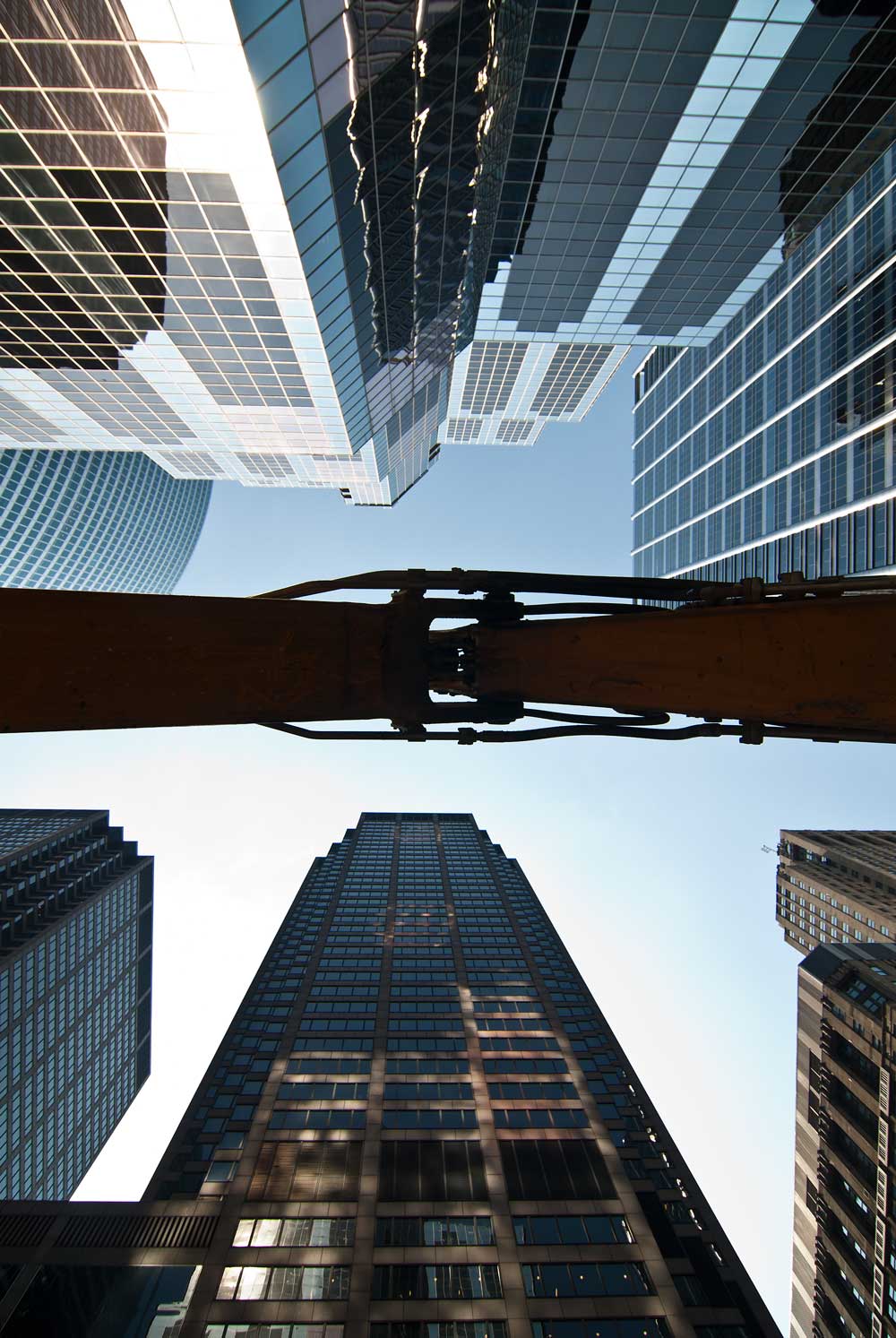
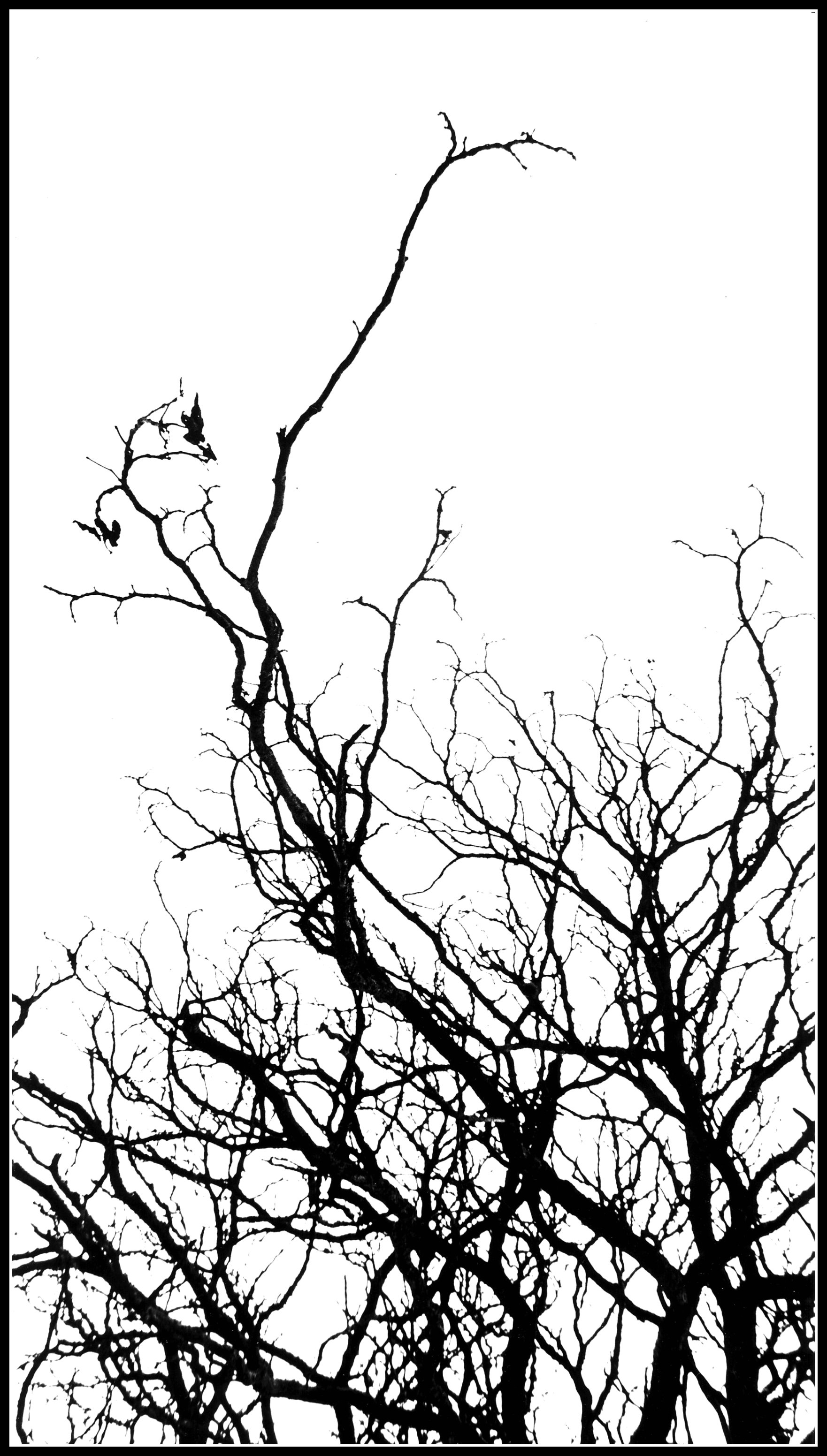
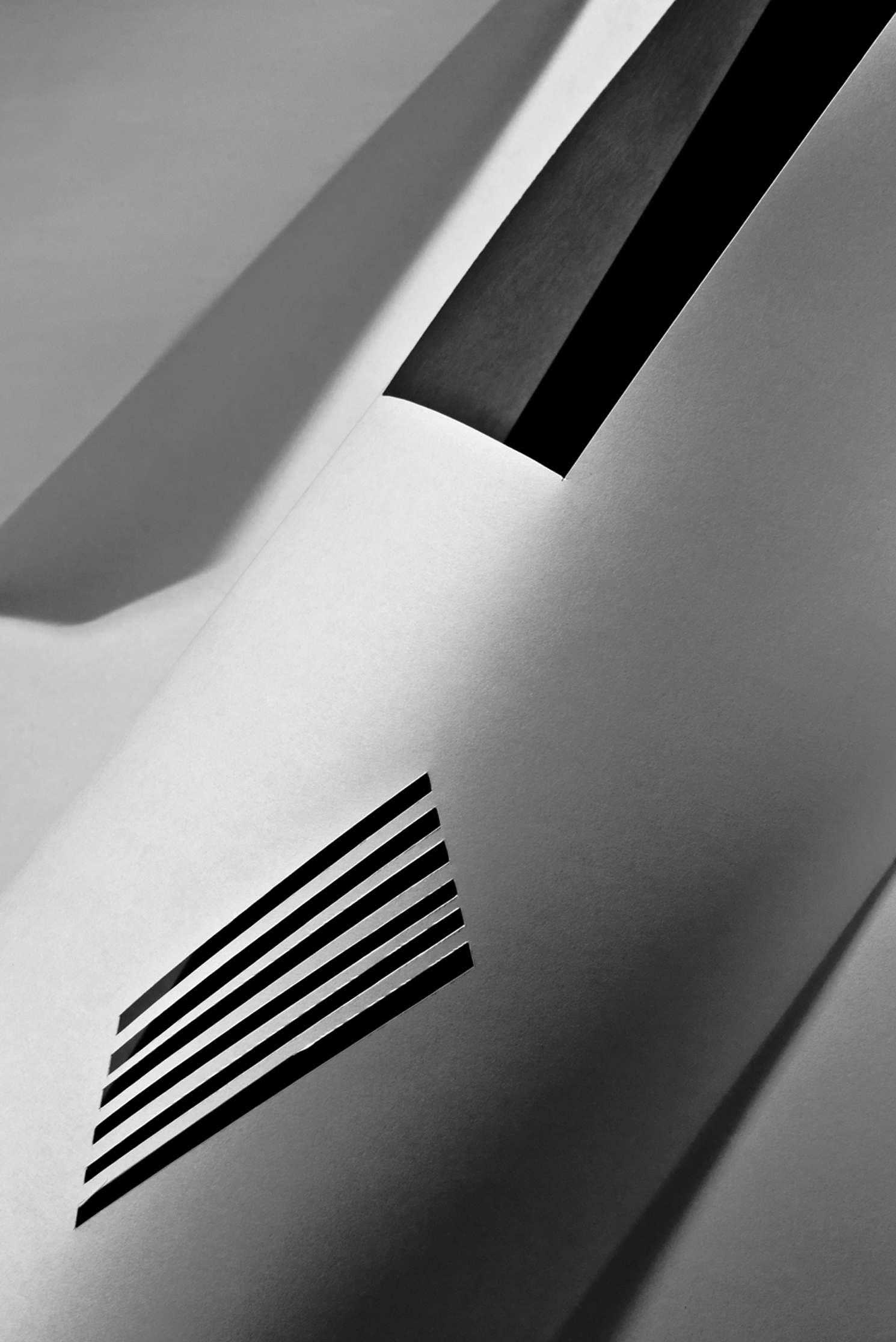
Growing up in downtown Chicago, I have always been cognizant of the surrounding architecture. What I found particularly interesting were the tall, steel frame buildings with their impenetrable faces; the patterns and intersections of lines that compose these structures greatly influenced my aesthetic sensibilities. I began my exploration of architecture with photography as I tried to find angles that would abstract buildings and flatten them into graphic and geometric compositions.
With
this project, instead of flattening space onto a two-dimensional plane,
I chose to create, and photograph, three-dimensional space formed from a
single piece of paper. For each piece, I fold and cut paper in such a
way that directional lighting creates an abstract space. The shapes
produced owe much to the ideas of Russian Constructivism and
Precisionism. The scale and setting of the pieces is intended to remove
the viewers from the architecture of the gallery and draw them into the
space created by the photographs.
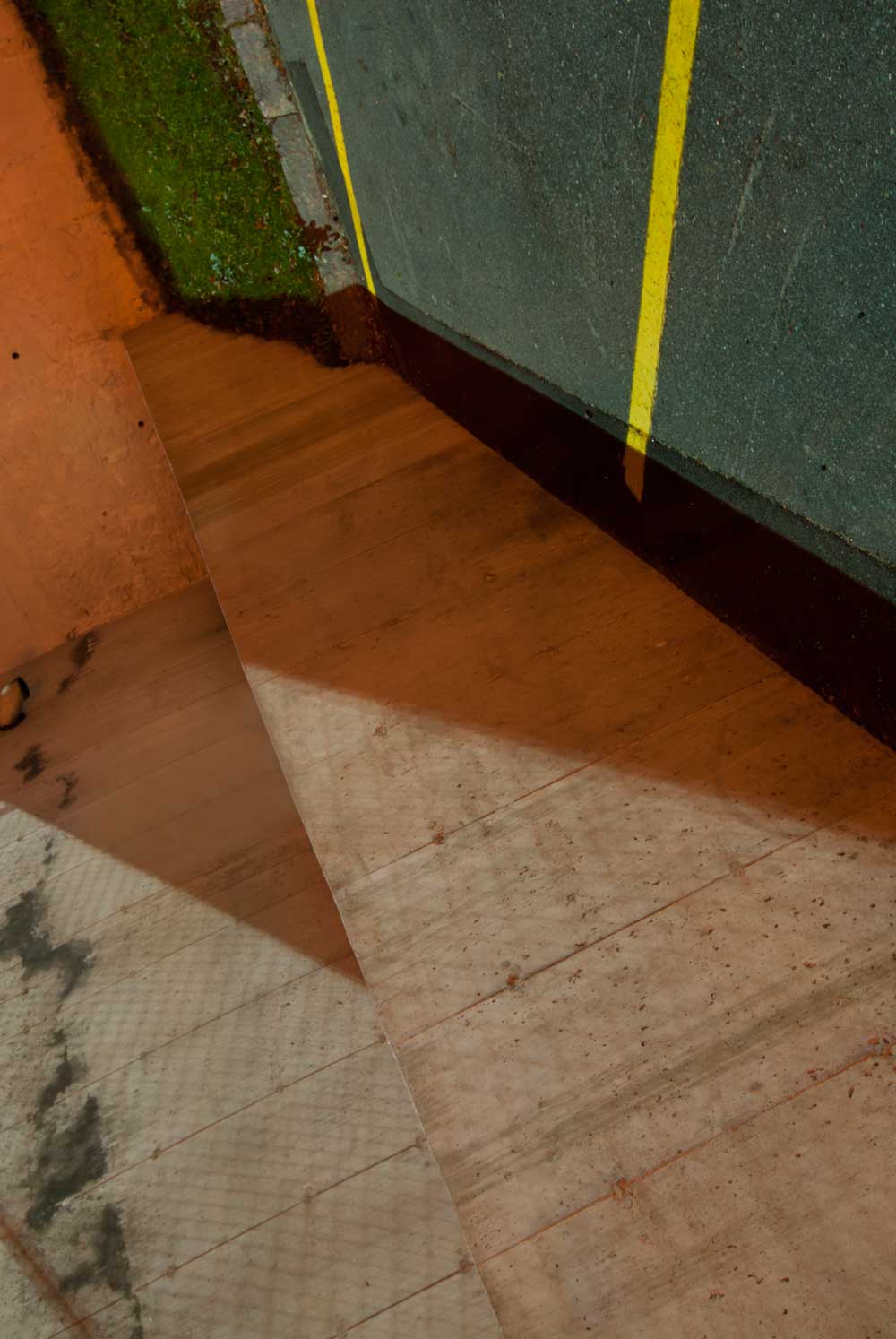

Growing up in downtown Chicago, I have always been cognizant of the surrounding architecture. What I found particularly interesting were the tall, steel frame buildings with their impenetrable faces; the patterns and intersections of lines that compose these structures greatly influenced my aesthetic sensibilities. I began my exploration of architecture with photography as I tried to find angles that would abstract buildings and flatten them into graphic and geometric compositions.
With this project, instead of flattening space onto a two-dimensional plane, I chose to create, and photograph, three-dimensional space formed from a single piece of paper. For each piece, I fold and cut paper in such a way that directional lighting creates an abstract space. The shapes produced owe much to the ideas of Russian Constructivism and Precisionism. The scale and setting of the pieces is intended to remove the viewers from the architecture of the gallery and draw them into the space created by the photographs.
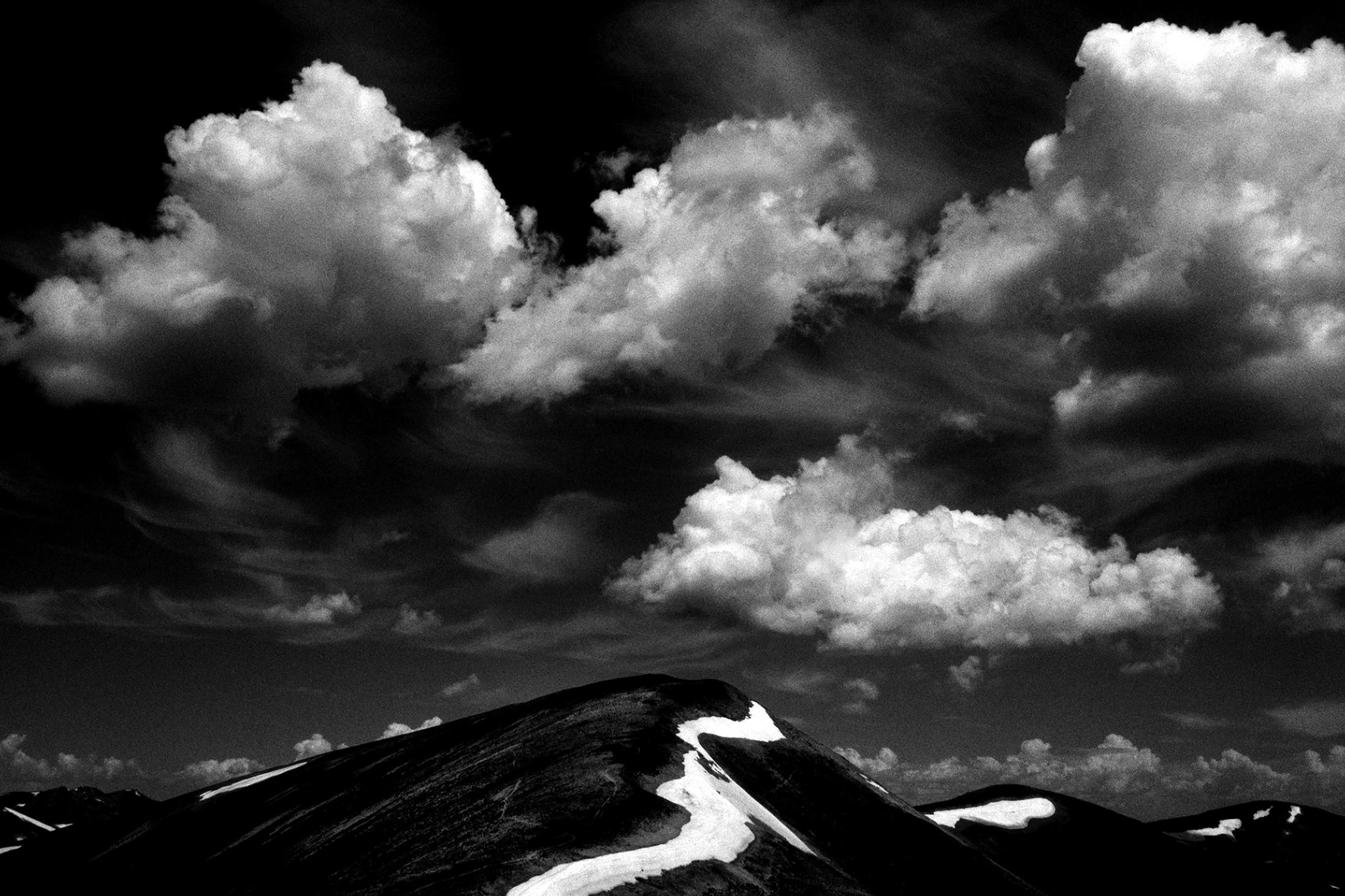
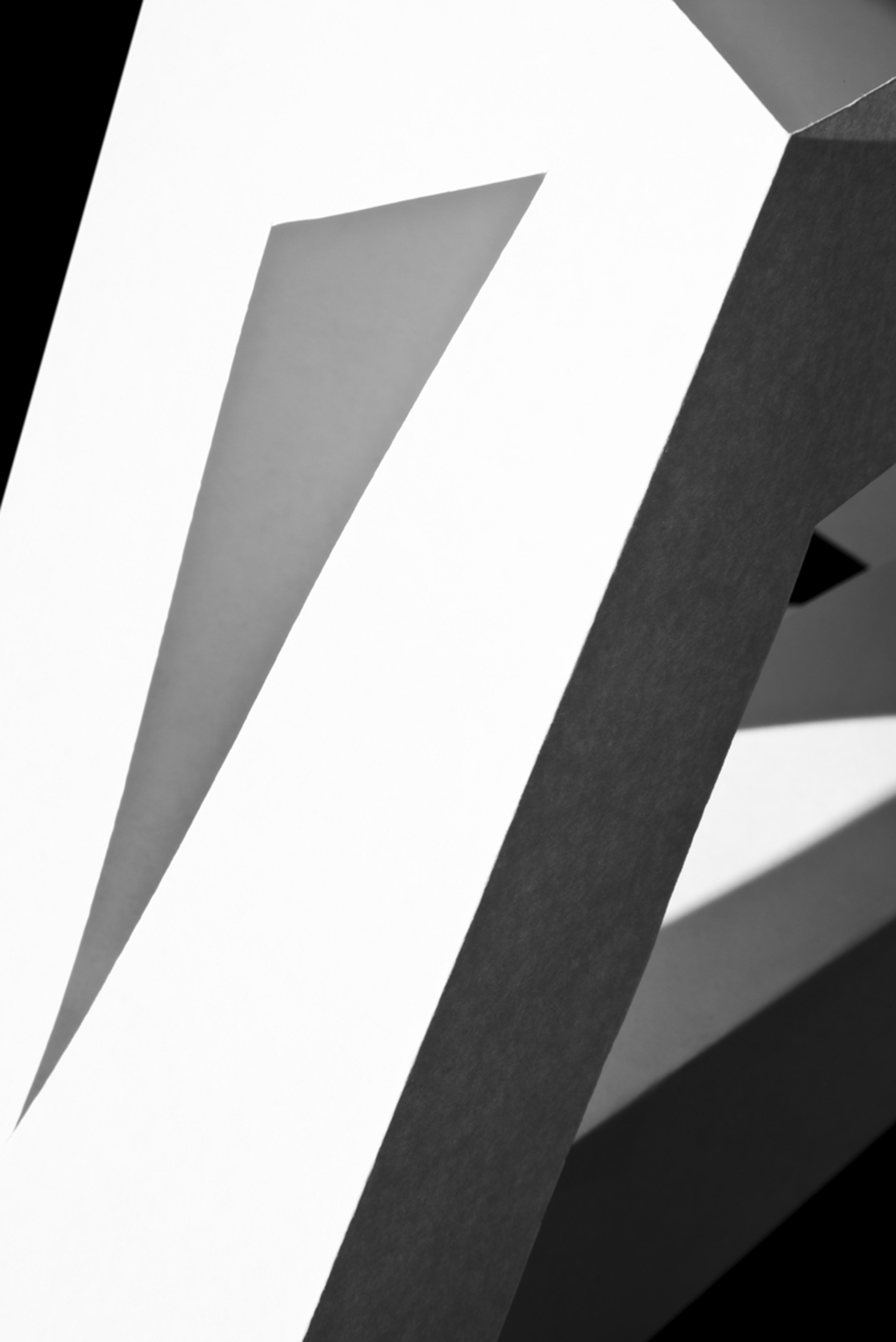
Growing up in downtown Chicago, I have always been cognizant of the surrounding architecture. What I found particularly interesting were the tall, steel frame buildings with their impenetrable faces; the patterns and intersections of lines that compose these structures greatly influenced my aesthetic sensibilities. I began my exploration of architecture with photography as I tried to find angles that would abstract buildings and flatten them into graphic and geometric compositions.
With this project, instead of flattening space onto a two-dimensional plane, I chose to create, and photograph, three-dimensional space formed from a single piece of paper. For each piece, I fold and cut paper in such a way that directional lighting creates an abstract space. The shapes produced owe much to the ideas of Russian Constructivism and Precisionism. The scale and setting of the pieces is intended to remove the viewers from the architecture of the gallery and draw them into the space created by the photographs.
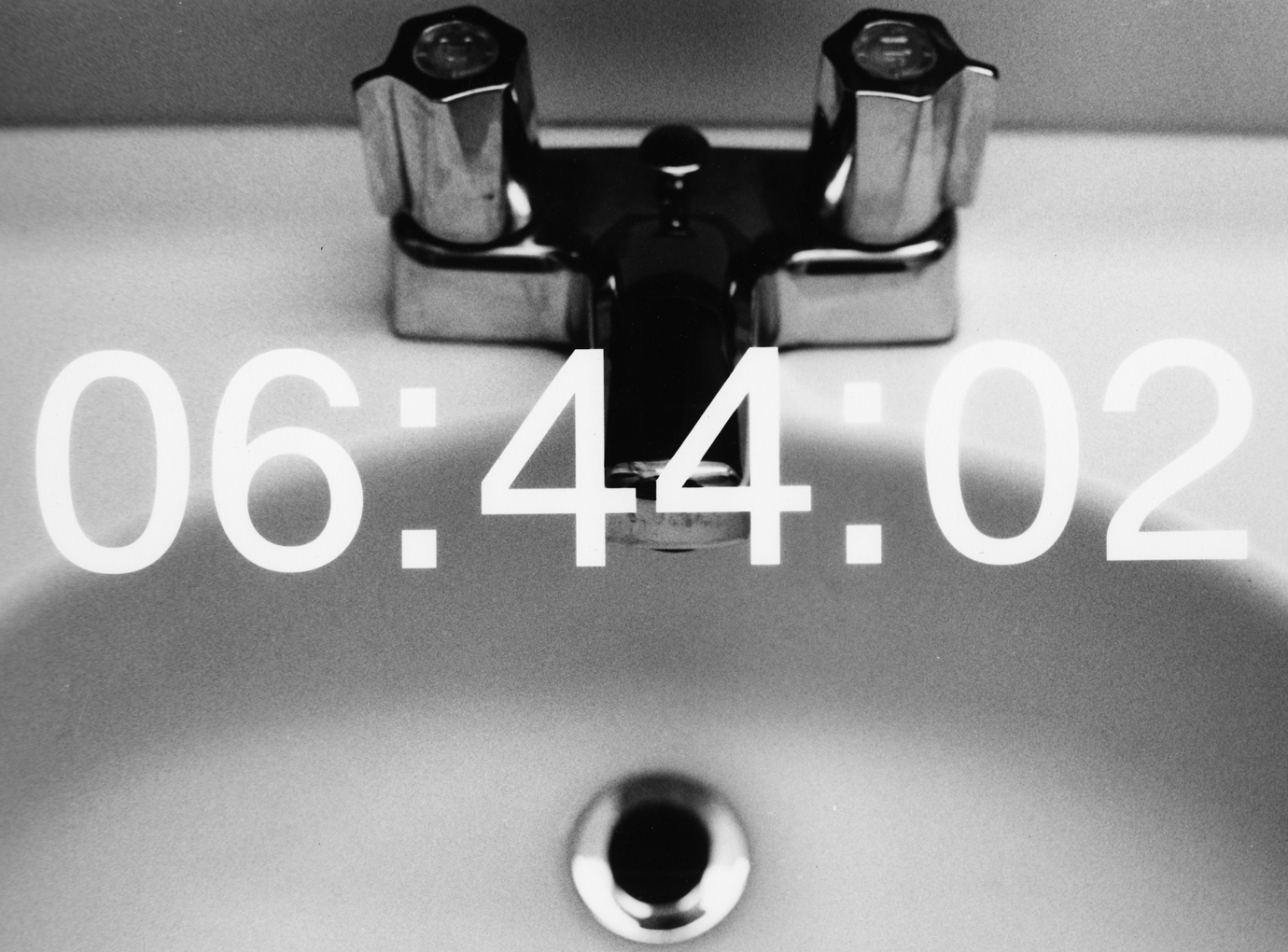
This project was created for a class called "Art & Time," and this was my final project for the class. The project was influenced by the Japanese conceptual artist, On Kawara. He is best known for his "date paintings" which he has entitled "Today Series." For this series, Kawara creates a painting with only the date in large letters, however, if he is unable to finish the painting within a day, he immediately destroys it. http://bit.ly/18IcK23
I wanted utilize a similar idea, however, instead of focusing on a day and using painting as its measure (as Kawara did), I wanted to pay attention to exact seconds. Photography was the obvious medium due to its precise nature and the camera's ability to freeze singular moments in time.
Using my film camera, I took photographs and had the
camera automatically imprint (in the margins) the exact time the picture
was taken. I then enlarged the time and printed the text in black on
transparency paper. When printing my final images, I placed the
transparency paper on top of the silver gelatin paper in order to block light and leave an imprint of the time.
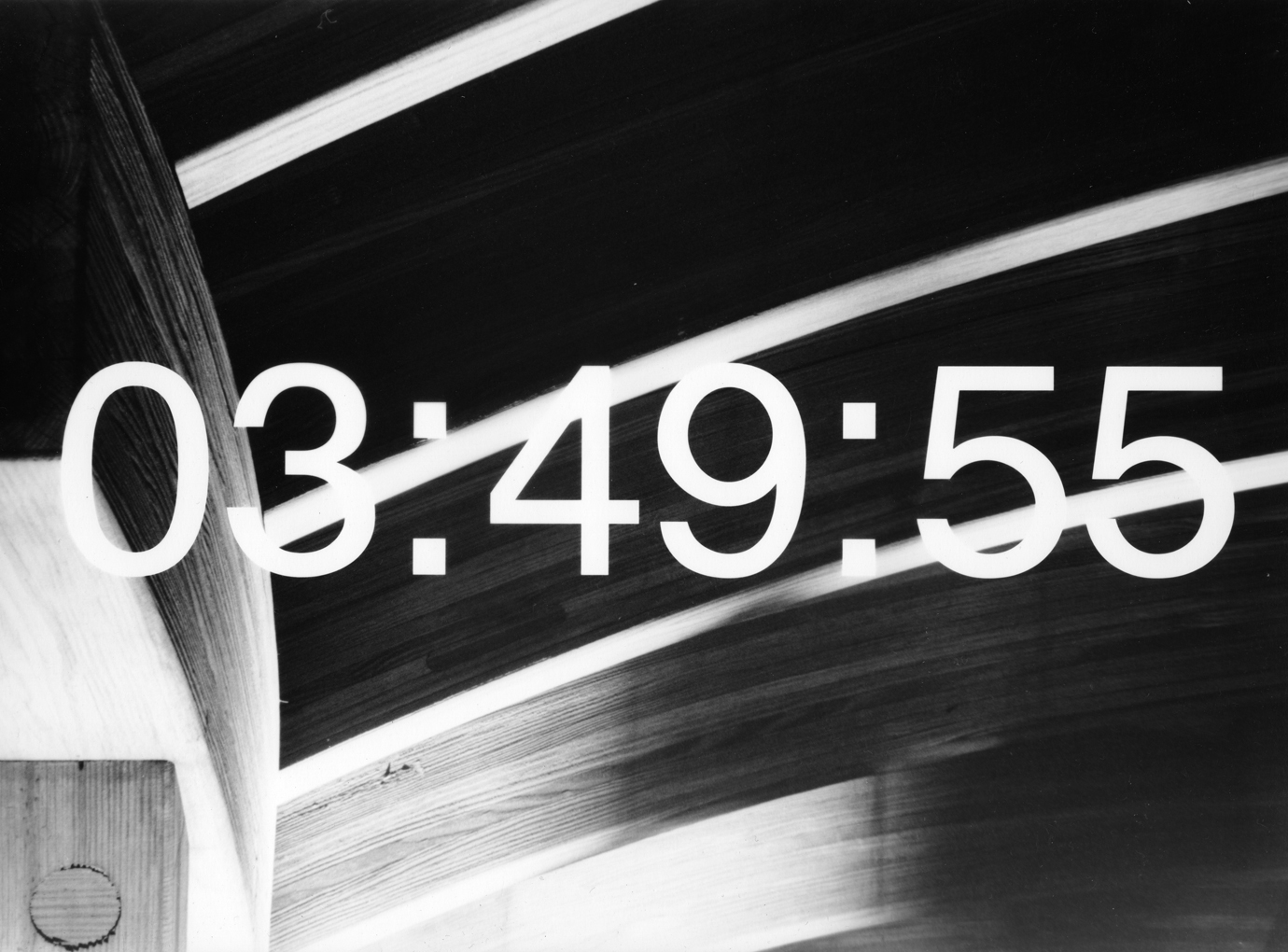
This project was created for a
class called "Art & Time," and this was my final project for the
class. The project was influenced by the Japanese conceptual artist, On
Kawara. He is best known for his "date paintings" which he has entitled
"Today Series." For this series, Kawara creates a painting with only
the date in large letters, however, if he is unable to finish the
painting within a day, he immediately destroys it. http://bit.ly/18IcK23
I wanted utilize a similar idea, however, instead of focusing on a day and using painting as its measure (as Kawara did), I wanted to pay attention to exact seconds. Photography was the obvious medium due to its precise nature and the camera's ability to freeze singular moments in time.
Using my film camera, I took photographs and had the
camera automatically imprint (in the margins) the exact time the picture
was taken. I then enlarged the time and printed the text in black on
transparency paper. When printing my final images, I placed the
transparency paper on top of the silver gelatin paper in order to block
out the light and leave an imprint of the time.
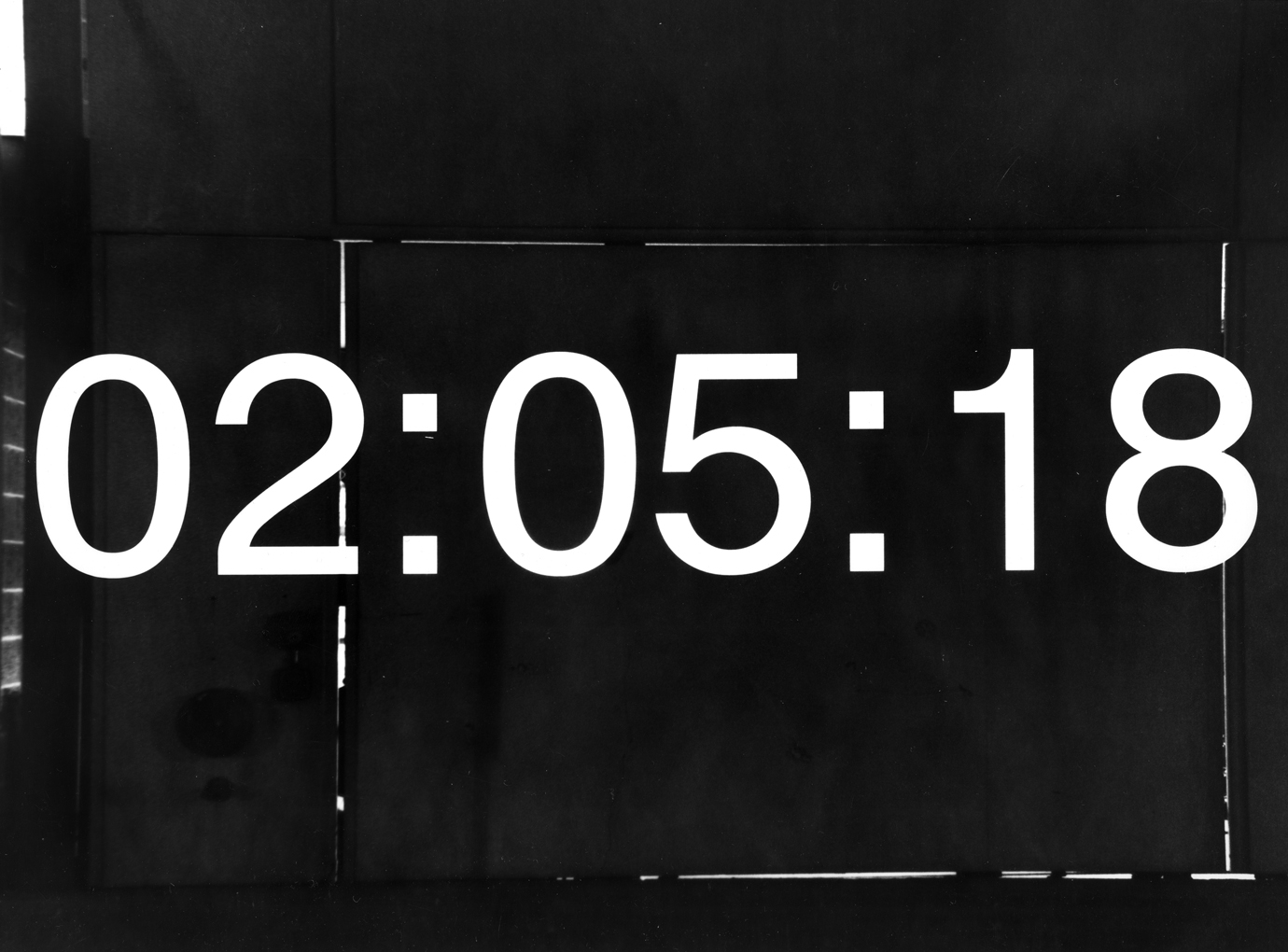
This project was created for a class called "Art & Time," and this was my final project for the class. The project was influenced by the Japanese conceptual artist, On Kawara. He is best known for his "date paintings" which he has entitled "Today Series." For this series, Kawara creates a painting with only the date in large letters, however, if he is unable to finish the painting within a day, he immediately destroys it. http://bit.ly/18IcK23
I wanted utilize a similar idea, however, instead of focusing on a day and using painting as its measure (as Kawara did), I wanted to pay attention to exact seconds. Photography was the obvious medium due to its precise nature and the camera's ability to freeze singular moments in time.
Using my film camera, I took photographs and had the camera automatically imprint (in the margins) the exact time the picture was taken. I then enlarged the time and printed the text in black on transparency paper. When printing my final images, I placed the transparency paper on top of the silver gelatin paper in order to block out the light and leave an imprint of the time.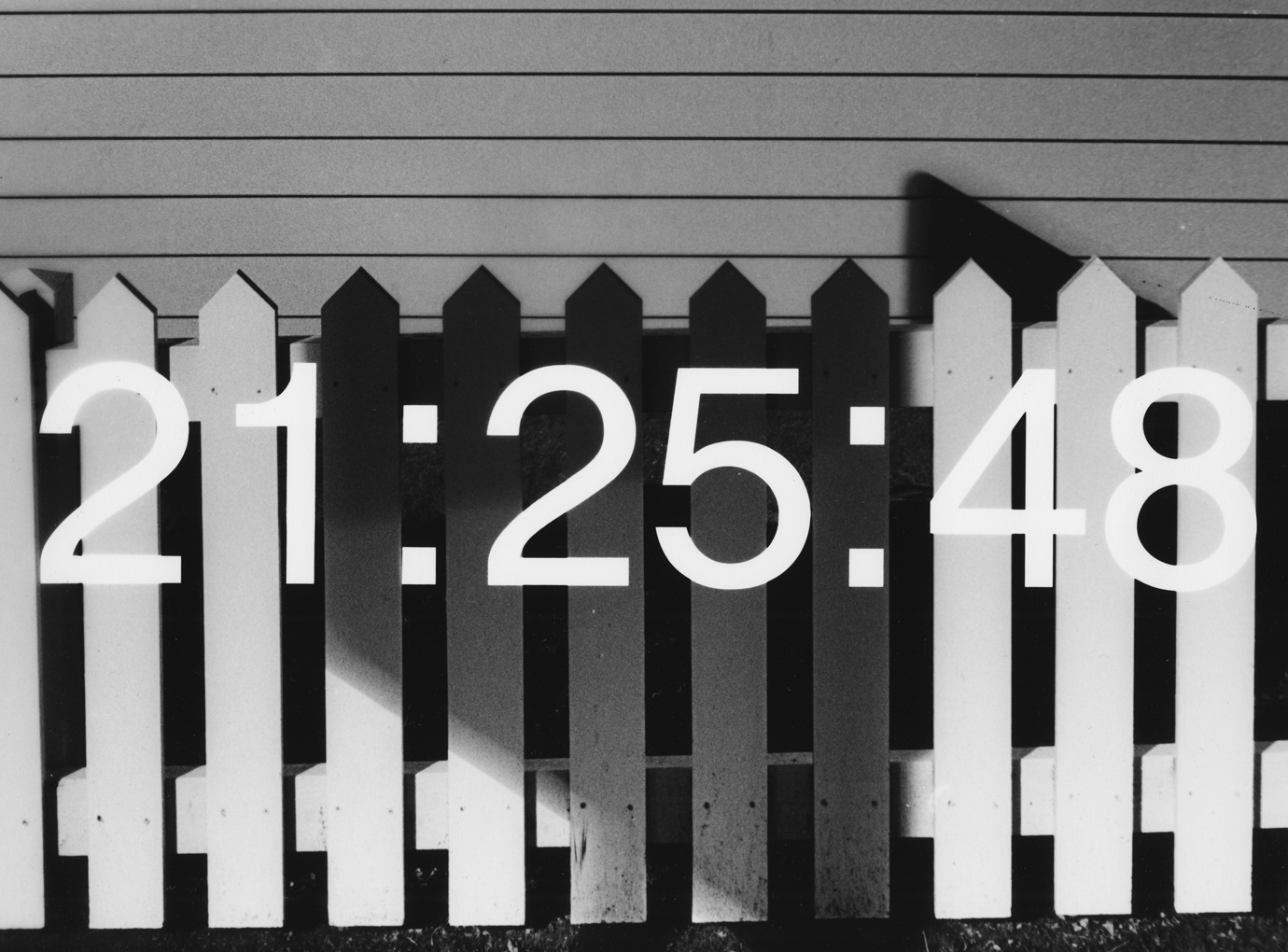
This project was created for a class called "Art & Time," and this was my final project for the class. The project was influenced by the Japanese conceptual artist, On Kawara. He is best known for his "date paintings" which he has entitled "Today Series." For this series, Kawara creates a painting with only the date in large letters, however, if he is unable to finish the painting within a day, he immediately destroys it. http://bit.ly/18IcK23
I wanted utilize a similar idea, however, instead of focusing on a day and using painting as its measure (as Kawara did), I wanted to pay attention to exact seconds. Photography was the obvious medium due to its precise nature and the camera's ability to freeze singular moments in time.
Using my film camera, I took photographs and had the camera automatically imprint (in the margins) the exact time the picture was taken. I then enlarged the time and printed the text in black on transparency paper. When printing my final images, I placed the transparency paper on top of the silver gelatin paper in order to block out the light and leave an imprint of the time.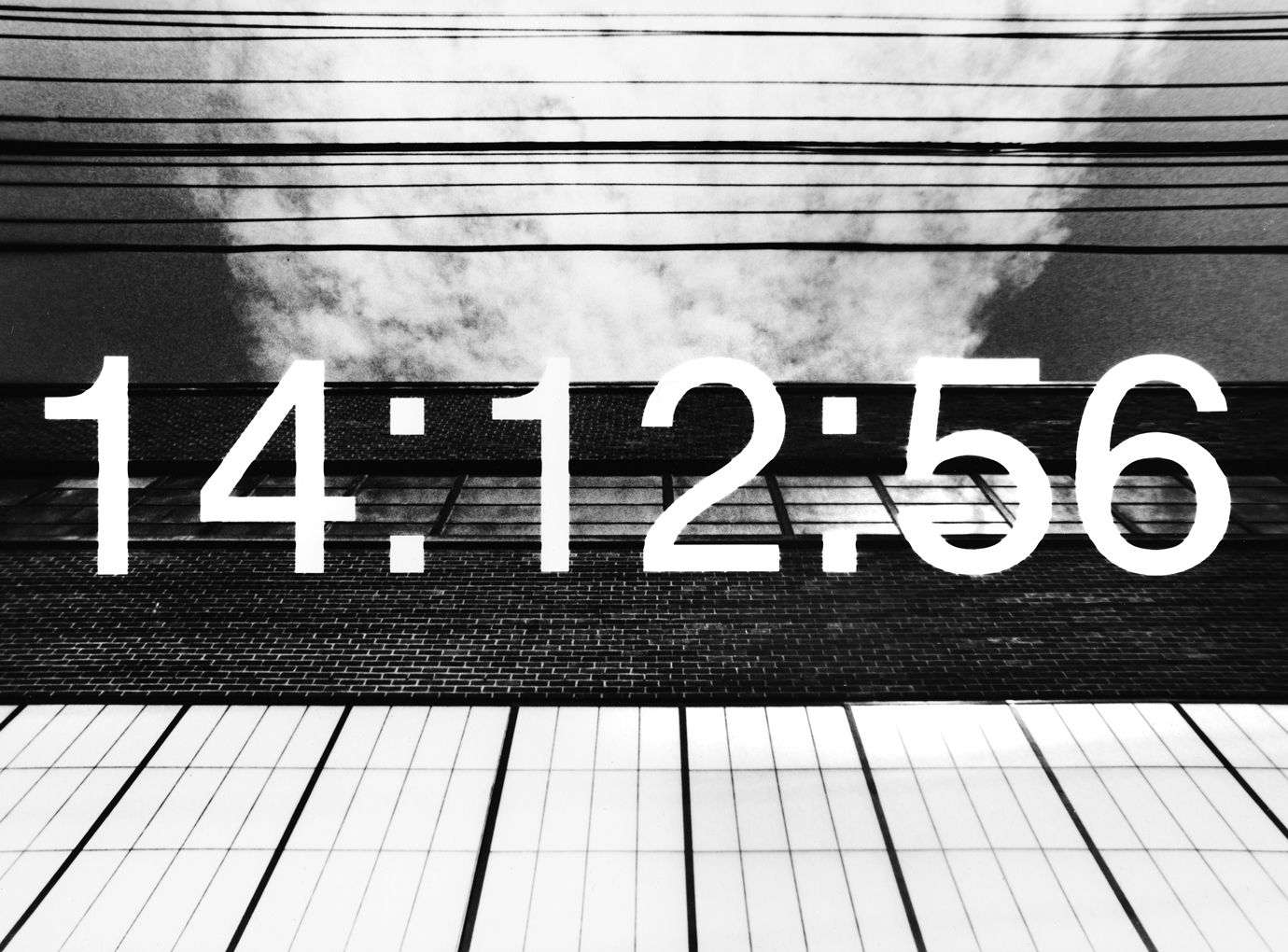
This project was created for a class called "Art & Time," and this was my final project for the class. The project was influenced by the Japanese conceptual artist, On Kawara. He is best known for his "date paintings" which he has entitled "Today Series." For this series, Kawara creates a painting with only the date in large letters, however, if he is unable to finish the painting within a day, he immediately destroys it. http://bit.ly/18IcK23
I wanted utilize a similar idea, however, instead of focusing on a day and using painting as its measure (as Kawara did), I wanted to pay attention to exact seconds. Photography was the obvious medium due to its precise nature and the camera's ability to freeze singular moments in time.
Using my film camera, I took photographs and had the camera automatically imprint (in the margins) the exact time the picture was taken. I then enlarged the time and printed the text in black on transparency paper. When printing my final images, I placed the transparency paper on top of the silver gelatin paper in order to block out the light and leave an imprint of the time.



























